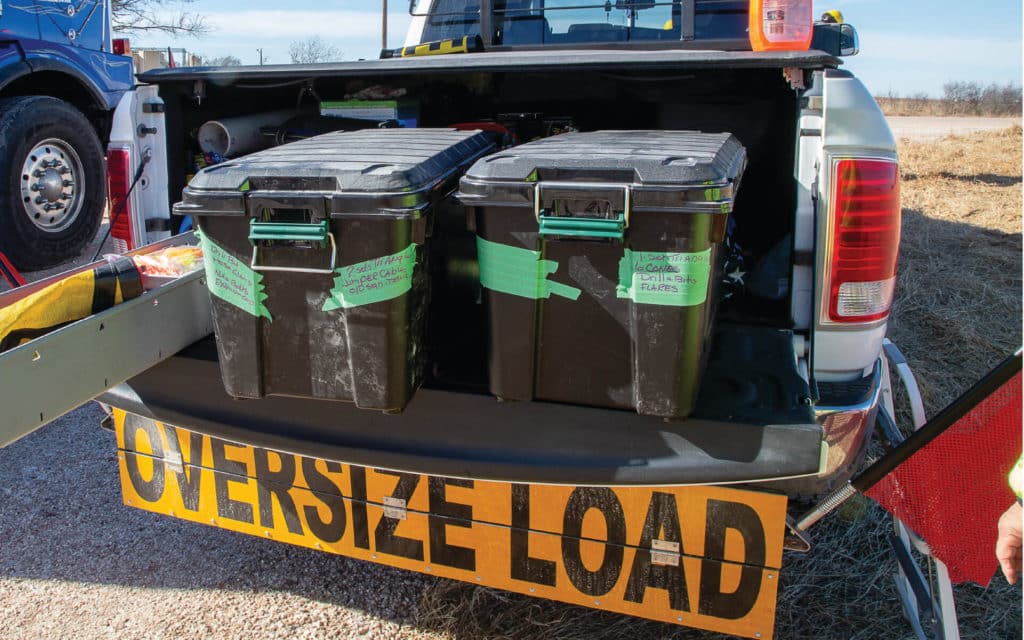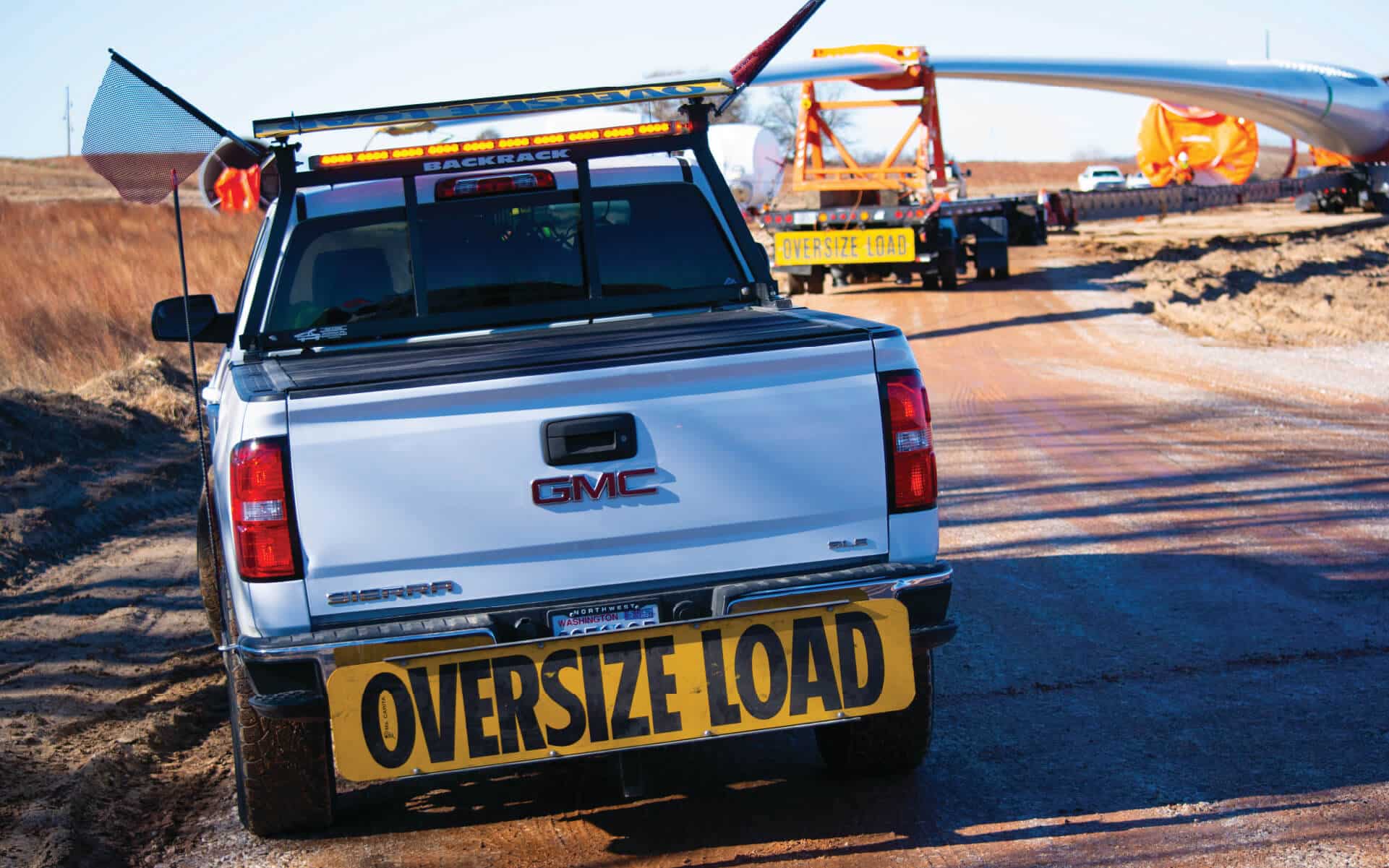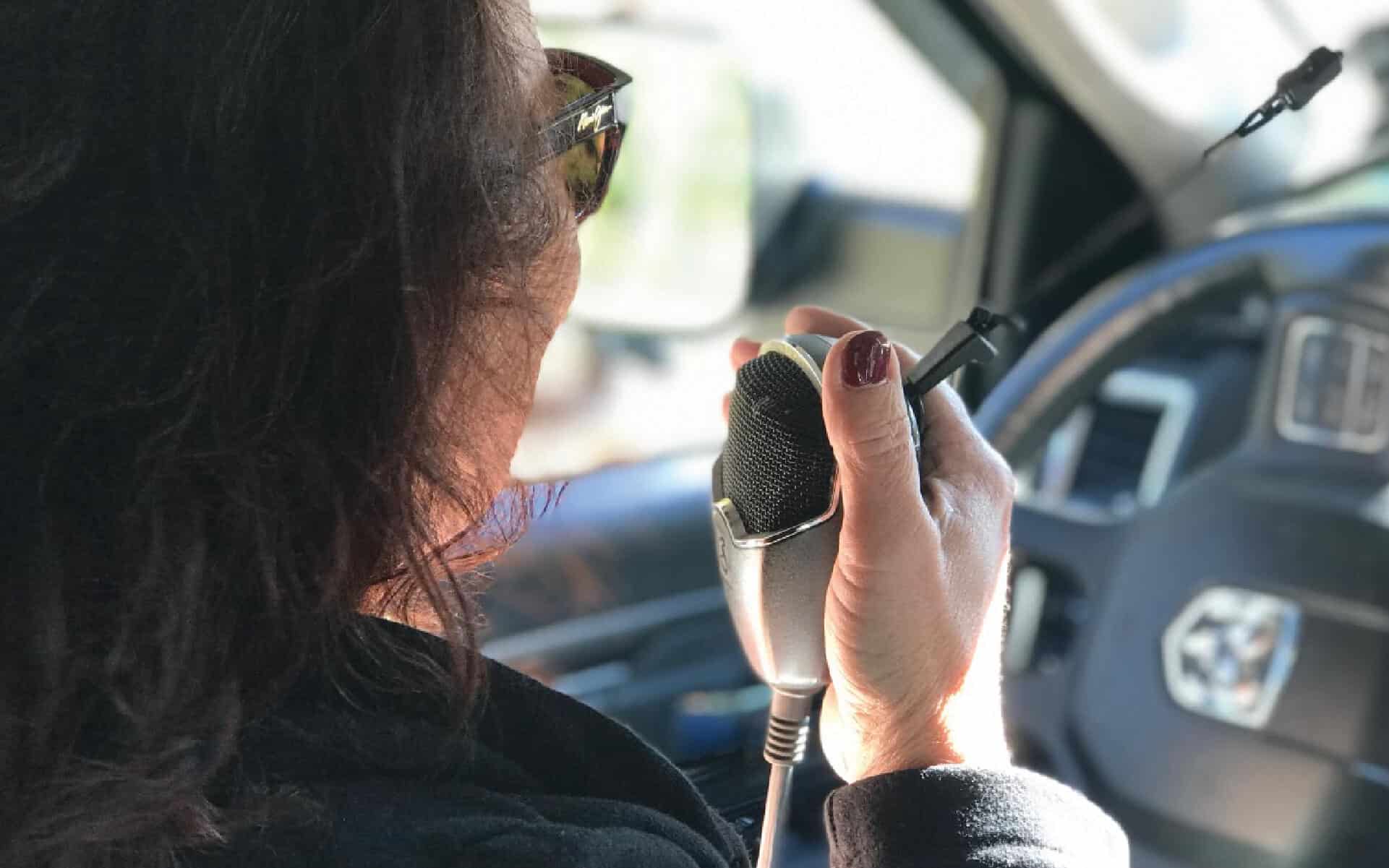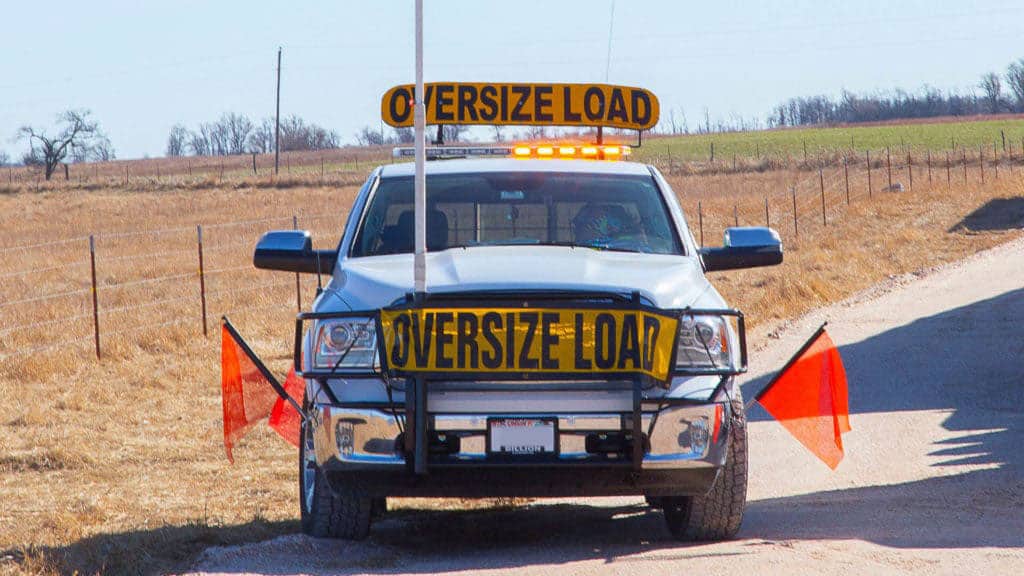New pilot/escort vehicle operators (P/EVOs) are responsible for acquiring their own equipment, unless supplied by an employer. The following supplies are recommended by Evergreen Safety Council, based on our Pilot/Escort Vehicle Operator Certification curriculum and the recommendations of the National Pilot Car Association. Please keep in mind that your state or jurisdiction may have additional requirements.
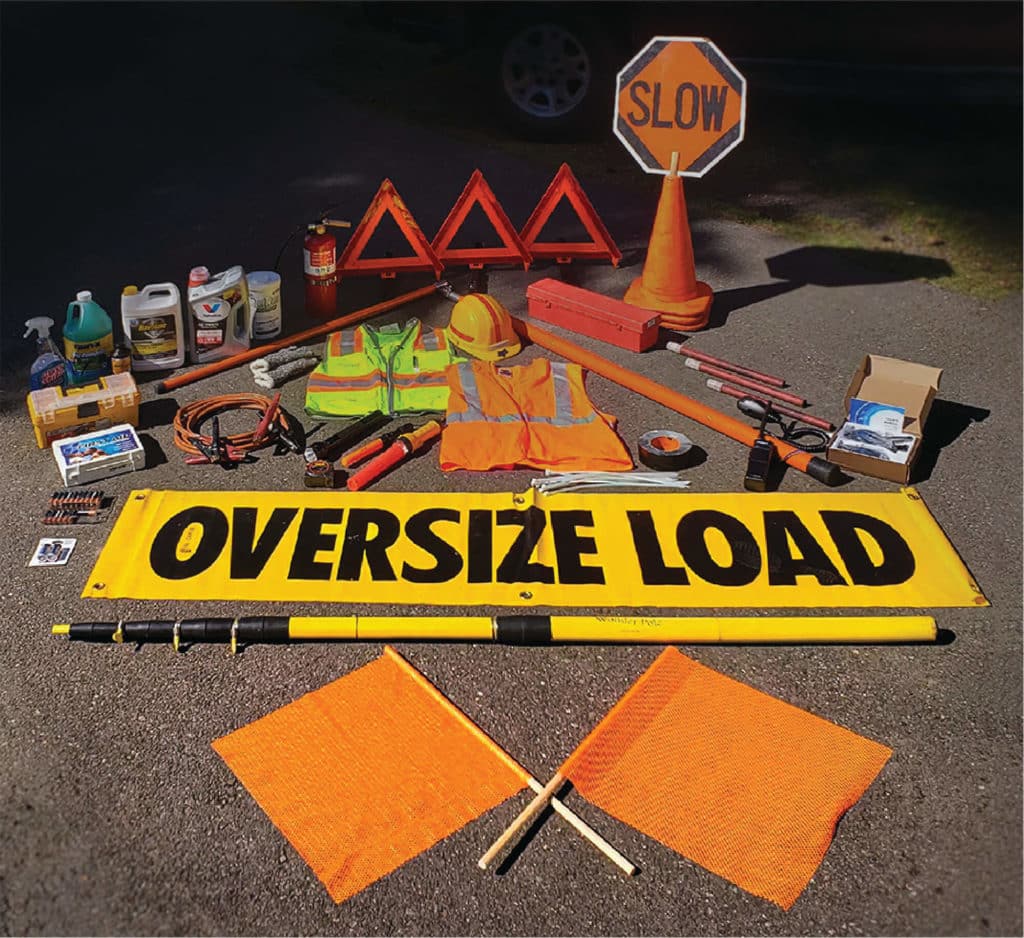
Step by step Breakdown:
- STOP/SLOW paddle
- Minimum of 18 inches wide, MUTCD-compliant, and retroreflective
- The STOP face must be red with a white border and white letters at least 6 inches high.
- The SLOW face must be orange with a black border and black letters at least 6 inches
- Double-sided “Oversize Load” sign
- To be mounted over the roof of your vehicle. Lettering must be black on a yellow background.
- Note: Some states require additional signage and/or placards as well as flags; refer to your state’s requirements for more information.
- Roof-mounted amber beacon light
- May be flashing or rotating. The lighting system must not be obstructed by the “Oversize Load” sign or any other materials carried by the vehicle, and must be visible 360 degrees around the vehicle and from 500 feet away.
- Light bars may be an acceptable alternative to beacons; refer to the rules in the area in which you operate.
- High pole
- Upper portion must be flexible so that it does not damage overhead objects or break when coming into contact with them.
- Must be nonconductive (to prevent electrical currents from entering the pilot/escort vehicle if contact is made with power lines).
- Adjustable to allow for varying load heights.
- Stable and flexible enough to tolerate high freeway speeds.
- Note: Homemade high poles do not always meet these standards; it is recommended to purchase a commercially available high pole.
- Bi-directional emergency reflective triangles
- Evergreen Safety Council recommends carrying a minimum of three; the National Pilot Car Association recommends nine.
- ANSI Class III Safety Vest
- To be worn during flagging operations, or when the operator leaves the vehicle to respond to an emergency.
- High visibility hard hat
- Recommended colors include white, yellow, yellow-green, orange, or red
- Should include 12 square inches of retroreflective banding
- Pilot car flags
- Three, 18”x18” (one for each side of the vehicle’s OVERSIZE LOAD sign and an extra should one become lost or disconnected)
- Fire extinguisher
- 5 pound class BC
- Traffic control cones with retroreflective collars
- Minimum size of 28 inches
- Minimum of three (check with your state to determine how many are required; some states may require up to nine)
- 15-minute flame flares
- Carry a minimum of eight
- Red stick flag
- 24” x 24” with weighted tips
- Radios
- Select quality 40-channel, 4-watt radios, antenna(s), speakers, and noise-canceling microphones, and have them installed by a qualified technician. Voice activated or other “hands-free” equipment is recommended.
- Carry at least one extra two-way radio for emergencies, and extra batteries for handheld CB units.
- Flashlight with red nose cone (also called a red traffic wand)
- Equip your kit with extra batteries and bulbs
- First aid kit
Note: Evergreen Safety Council does not maintain a list of pilot car equipment suppliers; several online retailers can be found by searching for “pilot car equipment” in your web browser.
